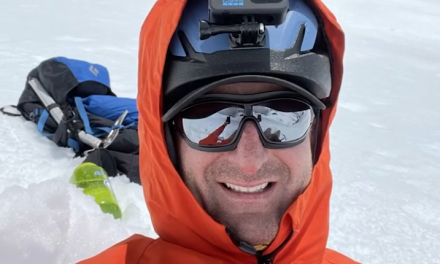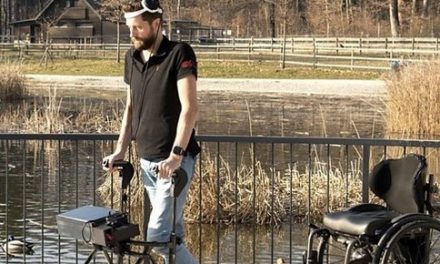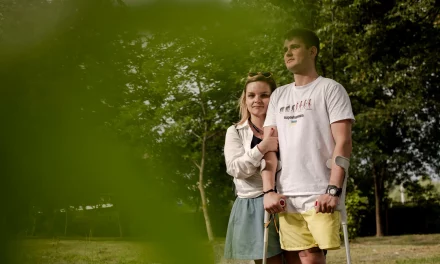He said: ‘This procedure has completely changed my life.’
The treatment, which took 30 years to develop, ‘teaches’ the spinal cord to control limbs and body functions independently of the brain. It was developed by a team of scientists from the University of Louisville, UCLA and the California Institute of Technology.
Mr Summers, who is normally confined to a wheelchair, has been able to push himself up and stand for several minutes without assistance at the Frazier Rehab Institute in Louisville. With help, he has taken repeated steps on a treadmill, and has regained some sexual and bladder function. He can also move his toes, ankles, knees and hips on command.
Scientists described the success, reported in The Lancet medical journal, as ‘a breakthrough’. Lead author Professor Susan Harkema from the Kentucky Spinal Cord Research Center at the University of Louisville, added: ‘It opens up a huge opportunity to improve the daily functioning of these individuals.’ The research was supported by the Christopher & Dana Reeve Foundation, the charity founded by Superman actor Christopher Reeve and his wife. Mr Reeve was paralysed from the neck down in a riding accident in 1995, and subsequently campaigned tirelessly on behalf of spinal injury research. He died in 2004 aged 52.
In 2006 Mr Summers was an athlete in peak physical condition and a pitcher for Oregon State’s championship baseball team. One evening he went to get his gym bag out of his car in Portland, Oregon, when a car smashed into him before speeding away.
He suffered serious spinal cord damage which left him paraplegic but with some feeling below the waist. He had two years of training to learn the muscle movements necessary to stand and take assisted steps. Then a device was implanted in his back to stimulate the lower spinal cord. Mr Summers, who now lives in Los Angeles, said: ‘For someone who for four years was unable to move even a toe, to stand on my own is the most amazing feeling.
‘To be able to pick up my foot and step down again was unbelievable. My physique and muscle tone has also improved greatly. I believe that epidural stimulation will get me out of this chair.’
He continues to teach baseball to children at summer camps.




